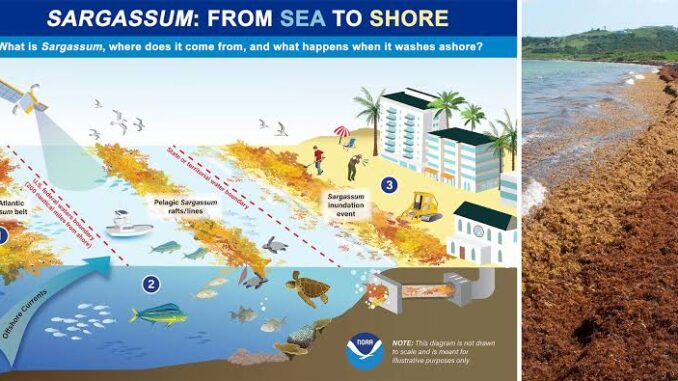
Due to the lost of many life’s:Sargassum seaweed monitoring has just band for the betterment of the country.
**Sargassum Seaweed Monitoring: A Necessary Step for the Betterment of the Country**
In recent years, the proliferation of Sargassum seaweed has become an alarming environmental and economic concern for many countries bordering the Atlantic Ocean, the Caribbean, and the Gulf of Mexico. The massive influx of Sargassum mats has led to significant challenges, including the loss of livelihoods, environmental degradation, and public health issues. Recognizing the severity of these impacts, many nations have begun to implement comprehensive monitoring systems for Sargassum seaweed, viewing them as essential tools for sustainable management and mitigation. This proactive approach aims to protect marine ecosystems, safeguard communities, and promote the country’s overall well-being.
The surge in Sargassum blooms has been linked to a combination of climate change, nutrient runoff from agriculture, and oceanic changes. These large mats of brown seaweed drift ashore in massive quantities, often covering beaches and coastal waters. The consequences are dire: fishermen find their boats and nets entangled, coastal communities face economic downturns due to declining tourism, and the decomposing seaweed releases foul odors and toxins that threaten public health. Additionally, the overgrowth can smother coral reefs and seagrass beds, disrupting marine biodiversity and the fishing industry that many local populations depend on.
In response to these challenges, the government and environmental organizations have recognized the importance of systematic Sargassum monitoring. Such programs involve the use of satellite imagery, aerial surveys, and in-situ observations to track the extent, movement, and density of Sargassum blooms in real-time. These data-driven approaches enable authorities to predict influxes, plan timely interventions, and allocate resources effectively. For instance, early warning systems can inform beach authorities and fishermen to prepare for incoming Sargassum, allowing for better management and cleanup efforts before the seaweed causes extensive damage.
The ban on unregulated Sargassum harvesting and the implementation of monitoring systems are also driven by the need to prevent environmental harm. While harvesting Sargassum can be beneficial if done sustainably—such as using it for fertilizer or biofuel—improper collection methods can damage marine habitats and disrupt the natural ecological balance. Monitoring ensures that collection activities are conducted responsibly, minimizing negative impacts while maximizing benefits.
Moreover, Sargassum monitoring has broader implications for climate resilience and sustainable development. By understanding the patterns and causes of blooms, policymakers can develop long-term strategies to address the root causes, such as reducing nutrient runoff and mitigating climate change effects. It also fosters community awareness and engagement, empowering local populations to participate in conservation efforts and adopt environmentally friendly practices.
In conclusion, the recent ban and the establishment of Sargassum seaweed monitoring programs are vital steps toward safeguarding the country’s environment, economy, and public health. As Sargassum blooms continue to pose challenges, proactive and scientifically-informed measures will be essential for sustainable coastal management. Ultimately, these initiatives aim not only to mitigate the immediate impacts of Sargassum invasions but also to build resilience against future environmental changes, ensuring a healthier and more prosperous future for the nation.
Leave a Reply